By CDR Phillip Keuhlen, US Navy ret, USNA ’71
After the 2020 summer of riots, the U.S. Navy’s Chief of Naval Operations stood up Task Force One Navy (TF1N) on July 1, 2020. After a six-month effort, the final 142-page report was submitted on January 28, 2021.
Its two operating assumptions are, first, that the Navy, as an institution, is systemically racist, and, second, that “Mission readiness is stronger when diverse strengths are used and differing perspectives are applied.” Notwithstanding several key military principles—such as unit cohesion, strict discipline across the chain of command, and, well, uniforms—the Navy is now ideologically committed to the mantra that “diversity is strength.”
Not surprisingly, considering the key entering assumptions, the task force report identified problems with Navy systems, climate, and culture; and submitted almost 60 recommendations aligned with four lines of inquiry: Recruiting, Talent Management/Retention, Professional Development, and Innovation and STEM (as well as a fifth line for miscellaneous recommendations).
One should be skeptical, however, about the entire exercise and the recommendations that flow from it. It inaccurately depicts the proud institution of the United States Navy as systemically racist—a slander that has more potential to undermine morale, good order, discipline, and military effectiveness than any geostrategic adversary.
There are several reasons to consider the report fundamentally flawed in its approach, inaccurate in its portrayal of the current status of the Navy, and blatantly misrepresentative of the achievement of equality of opportunity in the service through the efforts of generations of Naval personnel. Those reasons include:
- Key assumptions are not supported by evidence.
- Some conclusions are driven by faulty assumptions.
- Some conclusions are the result of logical fallacies.
- Some data is misapplied, or misrepresented.
- Its language clearly indicates a political agenda.
The Military Value of Diversity
In assessing the current state of the Navy, the report states that the importance of diversity to the service rests in improved performance by diverse teams, a claim allegedly supported by social science data.
“These statistics are important because diverse teams are 58 percent more likely than non-diverse teams to accurately assess a situation. In addition, gender-diverse organizations are 15 percent more likely to outperform other organizations and diverse organizations are 35 percent more likely to outperform their non-diverse counterparts.
These are impressive claims, but beyond these top level summary statements, what do the cited source documents actually show, and what are their implications for the Navy? These are important questions since these assertions are the only performance-based evidence presented in the report to support the claim that “Mission readiness is stronger when diverse strengths are used and differing perspectives are applied.”
The Proceedings of the National Academy of Sciences of the United States of America is a peer-reviewed multidisciplinary scientific journal. The article cited by the task force is concerned with the effect of ethnic diversity on a mismatch between market prices and the true value of assets (a bubble) in sets of ethnically diverse and ethnically homogenous traders. The authors conducted the study because previous research on the effects of ethnic diversity in spheres such as economic growth, social capital, cities and neighborhoods, jury deliberations, organizations, and work teams were equivocal. Some studies found benefits, while others did not, a critical point not presented nor considered in the report.
The PNAS authors conducted stock trading simulations in two markets, Southeast Asia (Chinese, Indian, and Malay participants) and North America (white, Latino, and African-American participants), with individuals having the requisite financial skills. All trading information was true, public, and anonymous, and all participants could see all completed transactions and bid/ask offers. The trading accuracy of each participant was evaluated beforehand and considered in evaluating results.
The study concluded that, “Across markets and locations, market prices fit true values 58 percent better in diverse markets.” This summary is the only specific claim from this entire study cited by the Navy report. But the PNAS authors also analyzed the cause of the performance difference they observed and its implications.
Ethnic diversity facilitates friction. This friction can increase conflict in some group settings, whether a work team, a community, or a region. Conversely, ethnic homogeneity may induce confidence, or instrumental trust, in others’ decisions (confidence not necessarily in their benevolence or morality, but in the reasonableness of their decisions, as captured in such everyday statements as ‘I trust his judgment’). However, in modern markets, vigilant skepticism is beneficial; overreliance on others’ decisions is risky. (Emphasis added)
In this experiment, the gains came from increased friction and reduced mutual confidence, not from any cognitive diversity or assortment of perspectives and skills commonly posited to improve problem-solving through enhanced diversity. This insight raises several questions:
- Is the accurate determination of the value of stocks in a commercial market strongly analogous to military operational decisions at either the tactical or strategic level? The Navy report does not address this question. This is of vital importance to the relevance of any insight from the study given that the extant literature is equivocal at best on the benefits of diversity.
- What is the relative importance of any putative performance improvement from diversity in a military setting compared to greater friction, increased organizational conflict, and reduced instrumental trust in others’ decisions which the authors assess as the cause of the improvement noted?
- On what basis did the task force extend the narrow finding of the study (“market prices fit true values 58 percent better in diverse markets”) to the much more expansive “diverse teams are 58 percent more likely than non-diverse teams to accurately assess a situation?”
Considering the two unproven assumptions informing the whole report, it seems reasonable to conclude that the Navy cherry-picked a number from the cited study to support one or both of those assumptions. They misrepresented the study’s applicability as much broader than it is. And they ignored its conclusions about causality that are, at a minimum, adverse to unit cohesion, if not good order, discipline, and military effectiveness.
The McKinsey Report
McKinsey and Company is a worldwide management consulting firm that advises on strategic management to organizations across the private, public, and social sectors. According to the company’s website, its focus is on organizational transformation and is informed by a deep commitment to diversity and making a positive social impact.
A McKinsey “Diversity Matters” report cited by the task force looked at the level of diversity (defined as a greater share of women and a more mixed ethnic/racial composition in the leadership of large companies) and company financial performance (measured as average earning 2010-2013).
The executive summary of this report is the source of the Navy’s assertion that, “In addition, gender-diverse organizations are 15 percent more likely to outperform other organizations and diverse organizations are 35 percent more likely to outperform their non-diverse counterparts.” Is that statement valid?
The McKinsey report was prepared using a proprietary database of information on 366 commercial companies in seven industry groups. Top management teams were taken as defined in company websites and comprised over 5,000 individuals from the C-suite to senior vice presidents. Ethnic and racial categories were African Ancestry, European Ancestry, Near Eastern, East Asian, South Asian, Latino, Native American, and “other.”
It is important to understand that the McKinsey report was prepared from proprietary sources that are not shared and cannot be checked, unlike a peer-reviewed academic paper.
In addition to these limitations, McKinsey is explicitly committed to diversity and is engaged in selling their diversity-related expertise to other companies as transformative. These circumstances make this document more akin to a marketing brochure than serious scholarship. It is important to note the following qualifications:
- The analysis applies directly only to the association between executive team and board of directors’ diversity and the measure of earnings in selected commercial sectors.
- “The relationship between diversity and performance highlighted in the research is a correlation, not a causal link.”
- The observed relationship between diversity and earnings varied significantly by region (UK vs. United States/Canada vs. Latin America), by flavor of diversity (gender vs. race/ethnicity), and by whether it occurred in the executive team or in the board.
- Overall, gender diversity was a much more potent correlate of increased earnings margin than ethnic diversity.
- In the United States and Canada gender was not a statistically significant correlate of increased earnings margin.
- The use of proprietary data precludes independent review and analysis of McKinsey’s report, the hallmark of scholarly research.
As with the PNAS paper discussed previously, the use of the McKinsey report by the Navy invites critical observations and objections.
- How is the improvement in corporate earnings that is correlated with the diversity of only the most senior executives and directors in commercial markets analogous to military staffing and operational decisions at the tactical or strategic level? The Navy does not even address this question, let alone answer it.
- Why did the Navy task force misrepresent the finding of the McKinsey report that “gender-diverse organizations are 15 percent more likely to outperform other organizations” as applicable, when the report explicitly shows that in the United States and Canada gender was not a statistically significant correlate of increased earnings?
- Why did the task force ignore the clear observation in the McKinsey report that correlation does not confirm causation and present its “reasonable hypotheses” as fact?
- On what basis did the task force extend the narrow applicability of McKinsey’s study to the much more expansive claim that“gender-diverse organizations are 15 percent more likely to outperform other organizations and diverse organizations are 35 percent more likely to outperform their non-diverse counterparts.”
Beside its own research, the McKinsey paper summarizes outside sources in support of its assertions that diversity results in improved decision making and innovation. While that information is not cited directly in the Navy report, it is instructive to examine whether McKinsey uses the resources rigorously in its marketing environment.
First, McKinsey uses research by Page that is focused on professional (i.e.; cognitive) diversity of “informed views” among different kinds of executives (e.g.; engineering, vs. legal, vs. financial backgrounds, rather than demographic diversity) to support its assertion of the value of gender and ethnic/racial diversity. The assertion is unsupported by hard evidence of any relationship between the two very different types of diversity. In fact, the results are much better explained by scholarship in cognitive theory, the attributes of high-performance/high-reliability organizations, and research on methods to build and sustain them.
Next, McKinsey quotes anecdotally from an interview with a CEO in the food sweetener business who notes, “Diversity creates dissent, and you need that. Without that you’re not going to get any deep inquiry or breakthroughs.” The level at which such dissent is beneficial is not discussed and the cost/benefit balance of organizational dissent outside the context of product innovation is ignored. McKinsey quotes from a Harvard Business Review article and an associated study from the Center for Talent Innovation to state that, “In short, the data strongly suggests that homogeneity stifles innovation.”
However, the nature of the study and the strength of the results are underwhelming. The study relies on employee surveys of whether they felt that their ideas were accepted and acted upon by management. It correlated those results (again correlation, rather than causation, is demonstrated) with management diversity. It then extrapolated causality to recent gains in market share or capture (as perceived/reported by the surveyed employees, rather than documented from public records).
A modicum of managerial experience shows that the majority of employees know little about the formal or informal cost/benefit analyses that guide whether employee suggestions are advanced or abandoned, and often less about the financial or market performance of their companies. The suggestions of causality in this study are very weak, at best.
Finally, the McKinsey study cited the PNAS study discussed in more detail earlier. McKinsey generalized its results as, “if a market is dominated by any one ethnicity, it tends to make worse decisions.” This clearly misrepresents the study’s very limited scope and applicability to a much more expansive interpretation.
Demographic Analysis
We see from the preceding sections that one of the key assumptions in the Navy’s report, regarding organization performance on the basis of demographic diversity, rests on a tenuous foundation. Where it is based in research, the research is extrapolated far beyond its basis or rests upon research that does not meet common standards for scholarly inquiry.
The task force report completely ignores clear warnings in the sources it cites about equivocal findings regarding diversity in the literature, adverse effects due to demographic diversity (of a type that should be of concern for a military organization), and the logical fallacy of equating correlation with causation. The report misrepresents and overextends its source materials to present its central assumption as fact.
This, coupled with the other assumption (that the U.S. Navy is systemically racist), strongly indicates that the task force started with an answer in search of a justification, rather than as an honest exercise in self-assessment.
Beyond the fundamental consideration about whether increasing gender and racial/ethnic diversity is a net military benefit to the Navy, the task force provides no credible rationale for assuming that its diversity targets should correspond to the demographic makeup of the country as a whole. The relevant yardstick is the population eligible for service as officers or enlisted personnel.
In 2018 (the year used by the report for its data) only 36 percent of the U.S. population is of military service age: 18-44 years old. Further, with good reason, the Navy is enjoined from considering the entire pool of military age individuals for accession to the service. For instance, there are minimum standards of physical fitness and educational attainment.
Also, prior activities reflecting moral turpitude or potential vulnerability to hostile powers (such as criminal convictions or financial difficulties) may be disqualifying. In short, the demographic from which the Navy can recruit is not the demographic of the country as a whole.
Using information from U.S. Census sources, we can estimate the demographic profile of the Navy’s qualified candidate pool using the key requirement attributes of age and educational attainment.
Looking at the current state of the U.S. Navy, we find the following data:
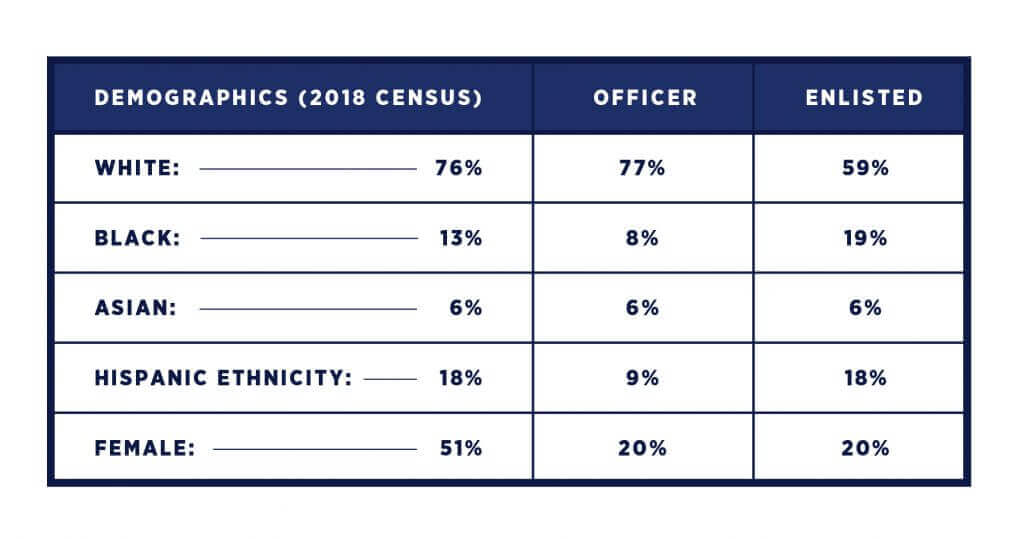
When we adjust the basis of measurement to the population pool eligible for recruitment, a radically different picture appears.
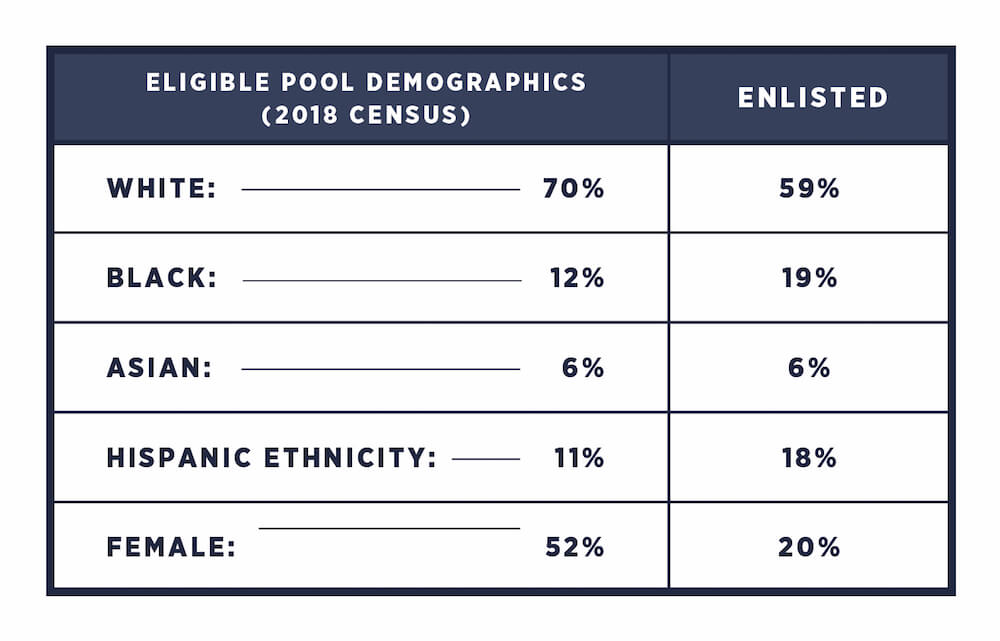
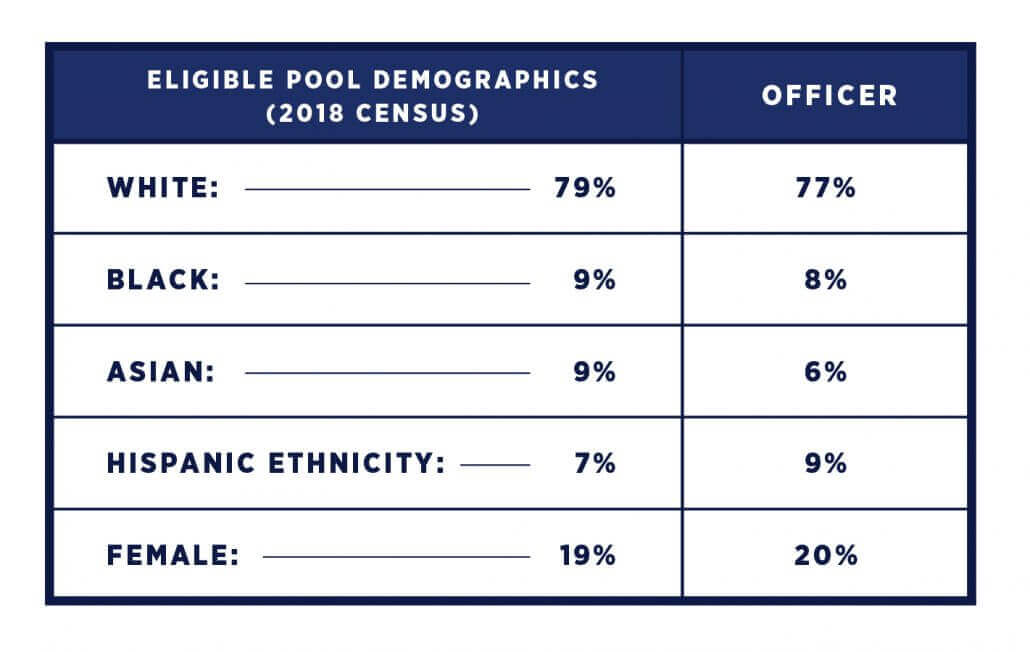
Measured against the demographic diversity of the eligible pool of candidates, the Navy is succeeding, not failing. The officer corps is within three percent of the eligible population in all categories with no gender gap, while the enlisted community has notably overachieved in attracting black and Hispanic sailors relative to their percentages in the eligible pool. The only enlisted demographics that have significant under-representation relative to the eligible pool of candidates are whites and women.
This situation of actual relative success versus portrayed relative failure is a consistent shortcoming of the report. As demonstrated in the tables below, when the demographics of accessions are properly measured against the demographics of the population pool eligible to be considered for accession the fiction of underserved minority communities evaporates.
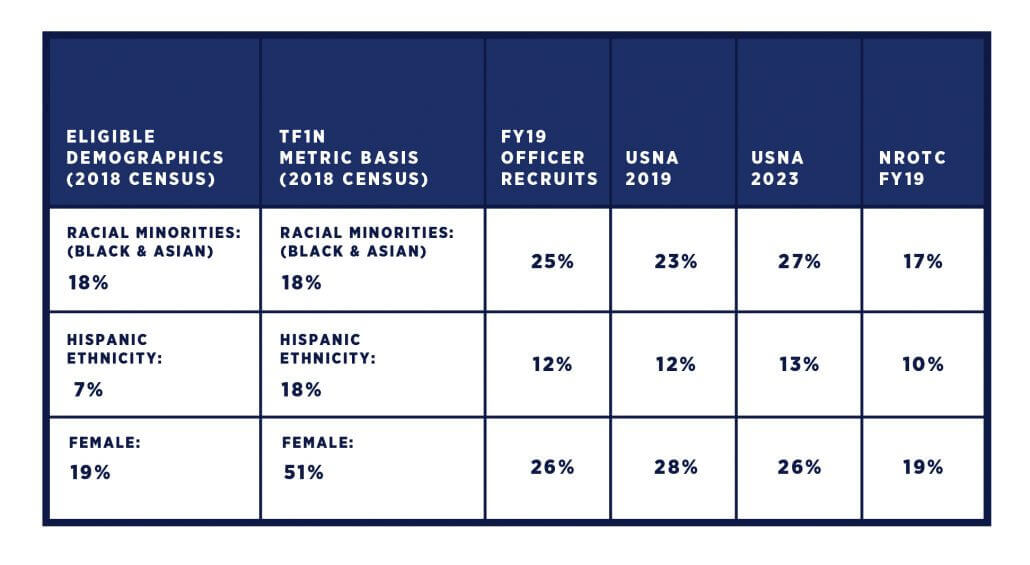
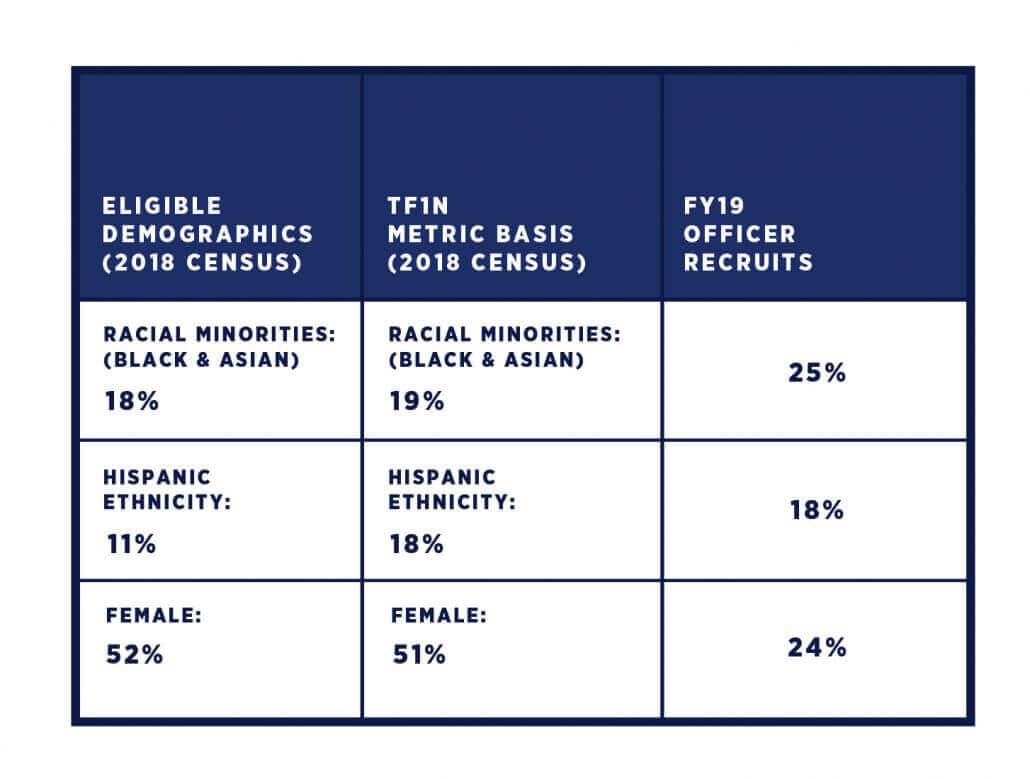
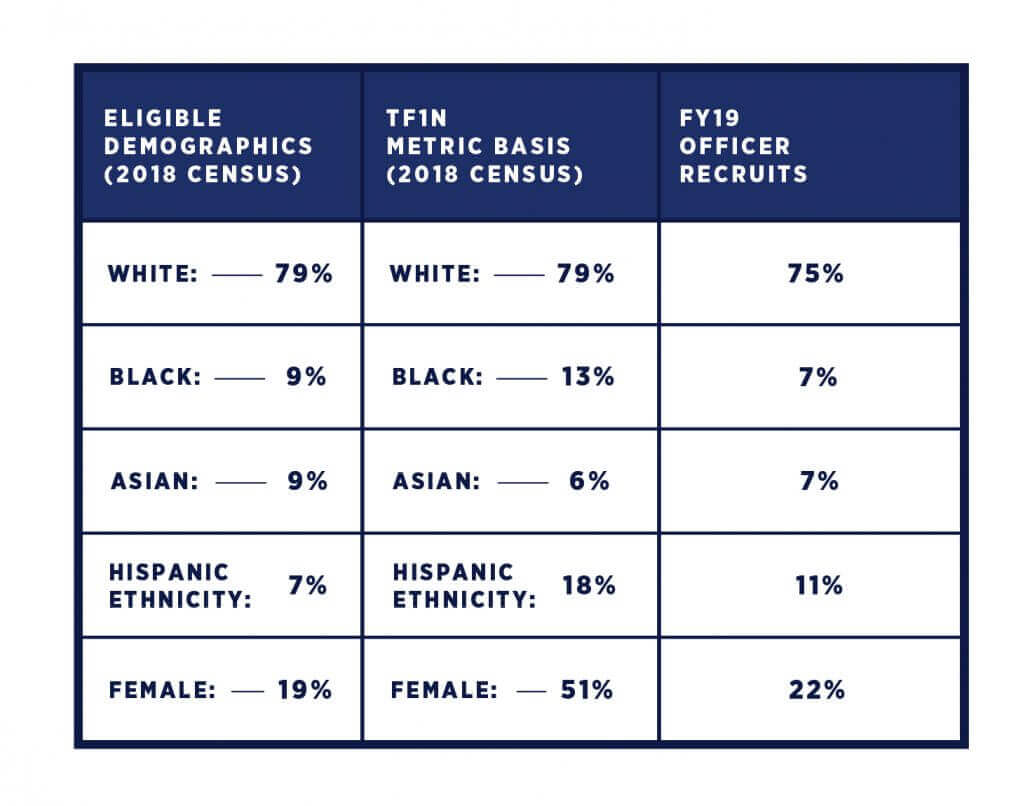
For the officer corps, virtually all commissioning sources comfortably exceeded the racial, ethnic, and gender distributions in the population that were eligible for accession. The sole near-miss was a two percent shortfall in one year of NROTC racial minority accessions. For enlisted sailors, racial and ethnic accession demographics again comfortably exceeded the relevant distributions in the population that is eligible to enlist. Only with respect to the gender of enlisted sailors is there any underrepresentation.
This is not the only place in which the report suffers from inappropriate choices for its basis of measurement or from misrepresentation of the statistical significance of the result it presents. In its assessment of Navy Wide Advancement Exam data, the report states that for E-4 to E-6, “minority advancement rates are lower compared to their white peers.” This conclusion is inaccurate in its portrayal, because it ignores demographic data for the “other/multiple races” category. When all demographics are considered, the narrative of lower minority advancement rates evaporates.
The report notes some contrary data, but passes over without further comment factors that do not fit its narrative of systemic racism. For instance, “racial minorities accounted for higher percentages in the Meritorious Advancement Program (MAP),” and that “data for E-7 and E-9 during the most recent four-year period (FY17-FY20) shows that black minorities and those of Hispanic ethnicity advanced higher than their white peers.” These disparities, however, do not elicit any concern from the task force.
The treatment of minority officer promotions is similarly disingenuous. The report maintains its narrative of the over-representation of white officers in selection results. Ignoring the problem of “small numbers” in comparing selection percentages in the flag ranks, the report identifies the outsized effect that small changes in selection numbers can have, but completely ignores how that effect bears upon its conclusion that white officers are overrepresented in the flag ranks. In point of fact, over the five-year period considered, a shift of only one selectee per year between white and any other demographic category results in under-representation of white officers in the flag ranks, clearly an unwelcome insight for the authors.
The Agenda
When one sees a study begun with explicit assumptions that make its outcome preordained, and its manipulation of data reveals bias confirmation, one is forced to ask why the effort was undertaken at all. In the case of the Task Force One Navy Final Report, the frame of reference and the agenda are evident in the language and terminology used throughout.
The clear purpose of the report is to justify and muster support for the Navy’s diversity initiatives, with the words diverse and diversity appearing frequently; on average more than twice per page throughout the report.
One might be excused for wondering why the leadership of an organization so self-evidently diverse (by gender, race, age, geography, socio-economic status, religion, education, and national/ethnic origin) as the United States Navy is focused so singularly on diversity.
A useful reference in this regard is Richard Delgado’s seminal work, Critical Race Theory, which is essential reading for any citizen interested in understanding the currents and counter-currents of contemporary American civic discourse. Familiarity with this work shows that themes of CRT find an active voice in the task force charter and final report. Central to the task force narrative is demonstrating the underrepresentation of minorities in the distribution of social goods, benefits, privilege and status. The term “underrepresented” occurs repeatedly in the report (more than 40 times).
Indeed, the report is extensively laden with the language and jargon of CRT including “lived experience,” “intersectional experience,” “systemic inequities and racism,” “structural and interpersonal biases,” “equity,” “unconscious bias,” and “identity.” The incorporation of this language confirms a philosophy and a political agenda on the part of those who wrote the Task Force One Navy Charter and steered the enterprise. And it provides the answer as to why data was manipulated in support of the inequities narrative: without the mathematical sleight of hand to create the false impression of underrepresentation, the entire effort collapses.
Critical Final Questions
Critical questions remain. First, does the Navy leadership understand the philosophy underpinning Task Force One Navy and the political intent inherent in the effort? Do they share that political agenda, or are they simply uninformed, unconcerned “useful idiots?”
The reason the answer to this question is critical is because, as Richard Delgado points out, “critical race theory questions the very foundations of the liberal order, including equality theory, legal reasoning, Enlightenment rationalism, and neutral principles of constitutional law.”
In short, CRT rejects the founding principles of the American nation reflected in the Declaration of Independence and the Constitution that every Navy sailor and officer has sworn an oath to support and defend.
CRT seeks to rewrite the history of the country, to replace its principles of governance, and reorder civic relations.
CRT would replace colorblind equality of opportunity with equity—equal outcomes based on racial identity.
As recent statements by the Chief of Naval Personnel indicate, the Navy is now explicitly considering race in officer promotions contrary to the guidance of 5 U.S.C. 2301 that “selection and advancement should be determined solely on the basis of relative ability, knowledge, and skills after fair and open competition which assures that all receive equal opportunity.”(Emphasis added)
The fundamental question is whether today’s Navy leadership is jettisoning the Navy’s previously colorblind, meritocratic culture (and subverting the nation’s Constitution and laws) without a fact-based, logical justification capable of withstanding rigorous scrutiny.
In the process and actions they have launched with the Task Force One Navy Final Report, do they place the Navy’s readiness to defend the nation at risk?


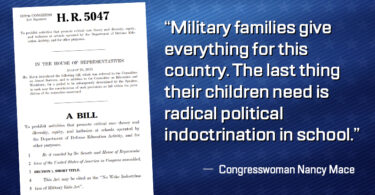
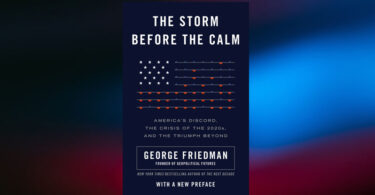


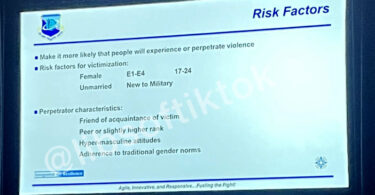

Leave a Comment